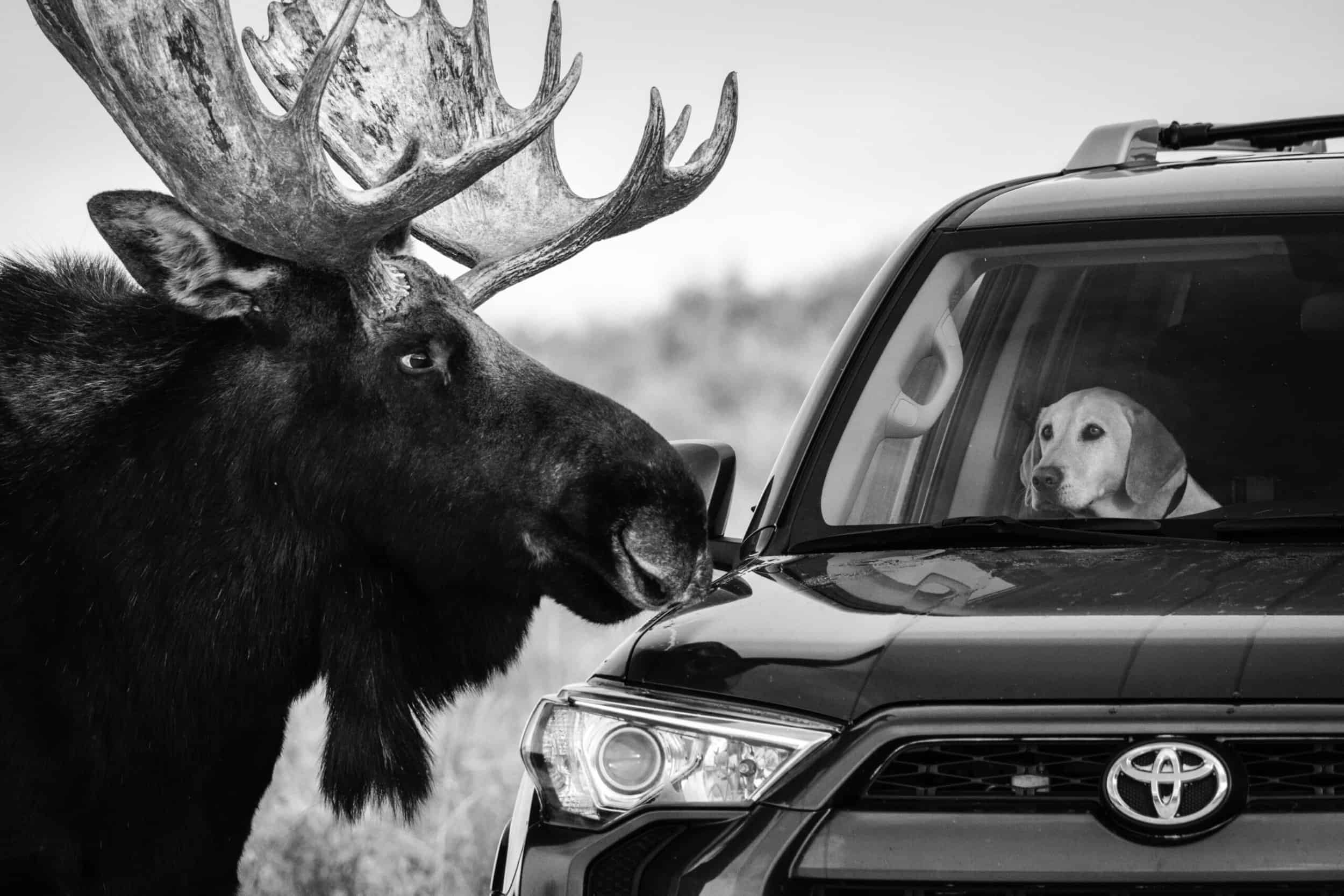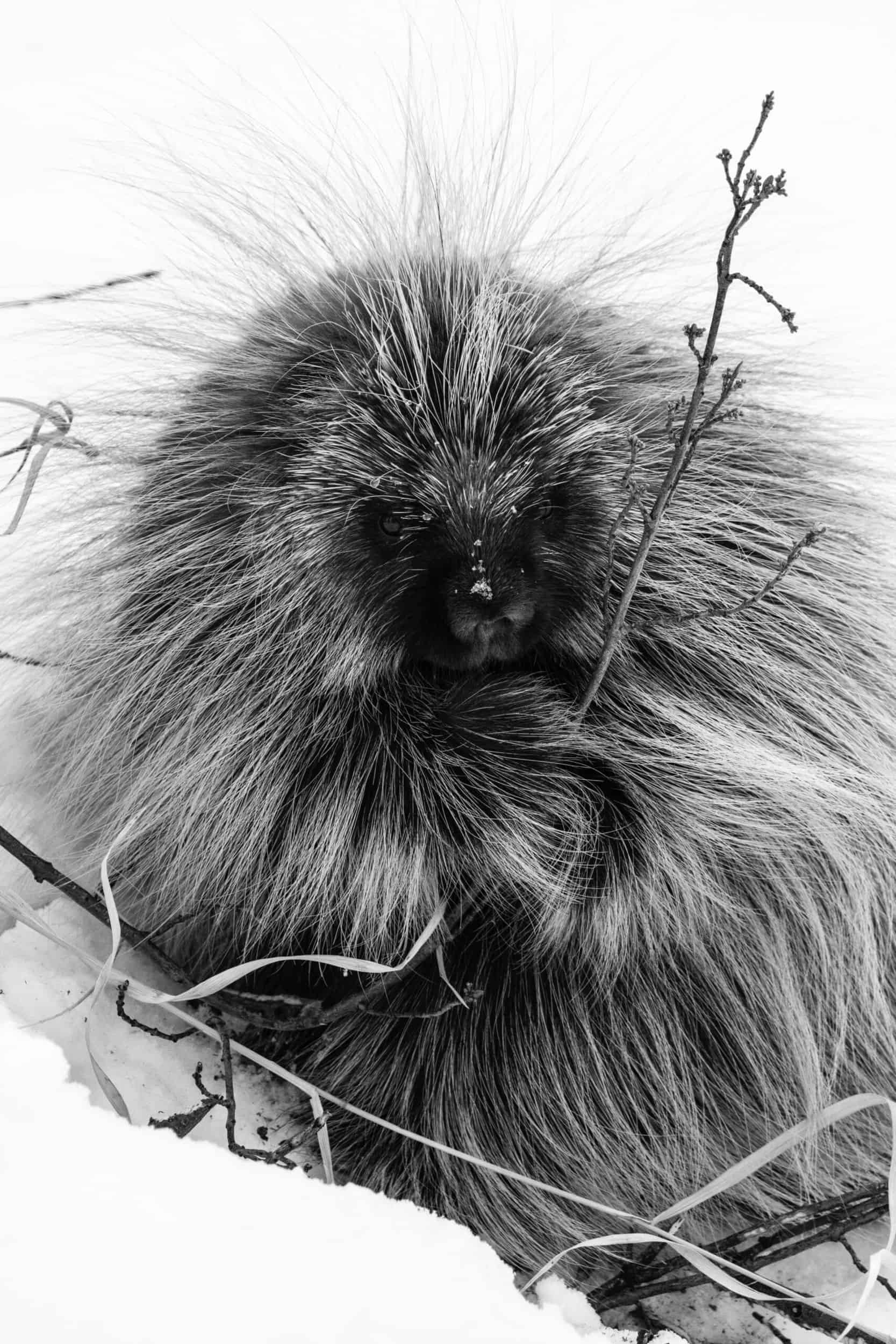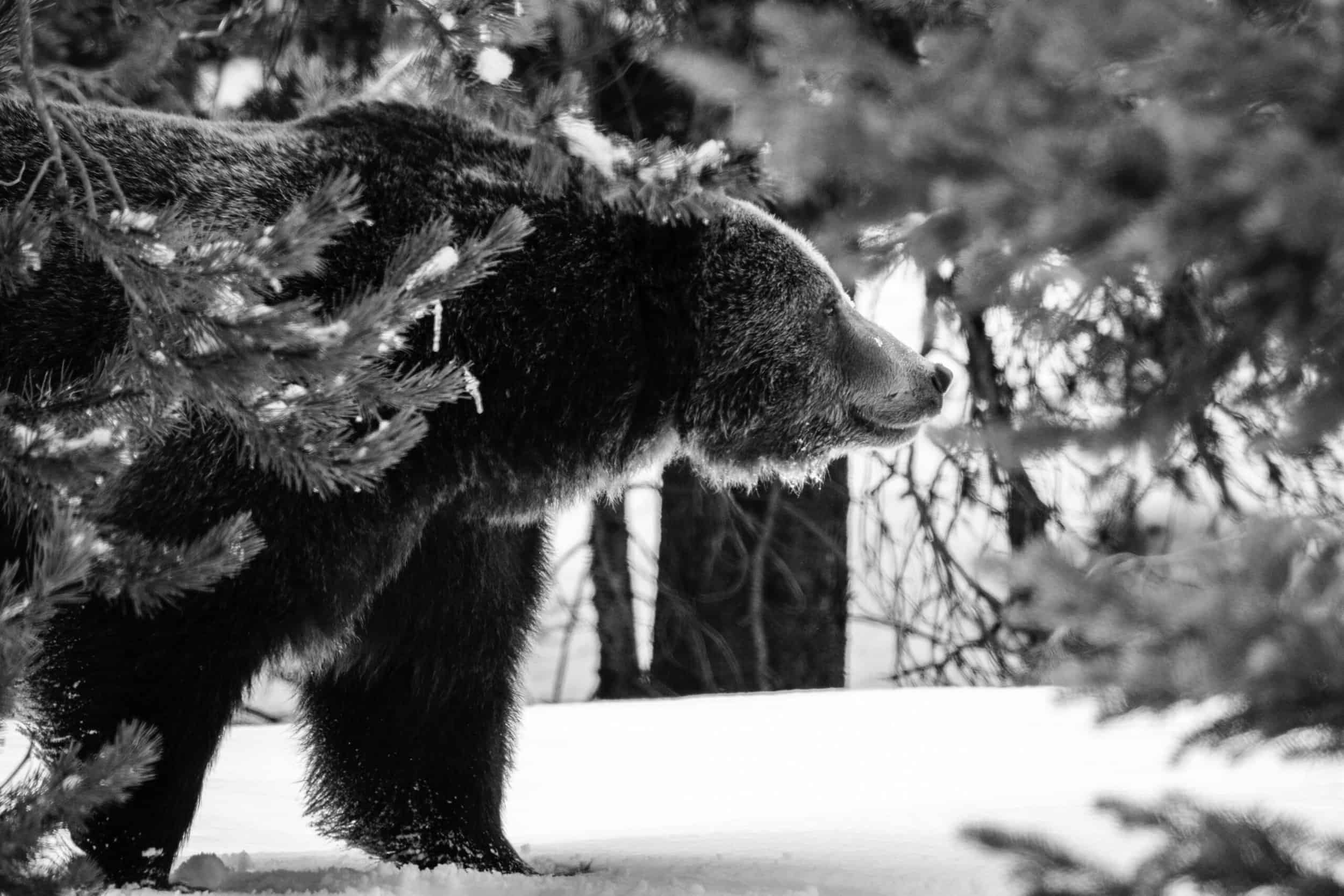Read The
Current Issue
“I try not to think too much if something has been photographed before. I just want to do a better image than I have before.”
// By Sofia McGulick
Guillermo Esteves didn’t get into photography until 2012 when he moved to the U.S. (from Venezuela), and he didn’t get into landscape and wildlife photography until he moved to Jackson Hole in 2018. This past spring, one of the twenty-five images he submitted to London’s Natural History Museum’s annual Wildlife Photographer of the Year competition was named one of four finalists—out of 49,000 images—for the People’s Choice Award. Since then, Esteves, who turns thirty-nine this summer, has been interviewed by the BBC and the French edition of GEO (similar to National Geographic) and is using the popularity of his finalist image to raise awareness of how to safely interact with wildlife.
“Close Encounter” is a photograph of a moose looking into a parked SUV through the passenger window while a dog sitting in the passenger seat—no more than a couple of feet from the moose—calmly returns its gaze. “The driver of the car parked a little too close and didn’t get a chance to move before the moose approached,” Esteves says. “In Grand Teton, you can be no less than twenty-five yards away from a moose, elk, or bison; and if you’re more than twenty-five yards away but they’re still reacting to you, you should be even farther away.”
While “Close Encounter” was the image of his that most caught people’s attention, Esteves only submitted it at his wife’s insistence. “Knowing the caliber of the photos entered, I wasn’t planning on sending that one at all,” he says. “I thought it was funny and lighthearted, and usually the photographs are related to conservation or very unusual animals.” Entries of his that he likes more include an image of grizzly bear 679, a boar known as Bruno, walking through the woods, a portrait of a porcupine taken near Ditch Creek, and a portrait of the “Close Encounter” moose. “That was probably one of the biggest bull moose I had ever seen,” says Esteves, who always has two Fujifilm X-T3 cameras with him—one with a zoom wide-angle lens and the other with a zoom telephoto lens.
While Esteves is inspired by Adams, he says we are in a different era now. “His work did a lot to promote and protect the parks, and we’re now in an era where a photograph can go viral and people will flock to that place and ruin it.”
Having grown up looking at Ansel Adams photographs, Esteves says that in his landscape images he’s been trying to focus less on obvious subjects like the Tetons and more on details. “I’ve always admired Ansel Adams’s ability to be in the middle of Yosemite with Half Dome and El Capitan in front of him, but he can focus on the beauty of a leaf, or a tree,” he says. Esteves is further inspired by Adams to capture images in black and white. “But I’m also red/green color blind, and that makes colors less compelling to me,” he says. “More compelling are texture, shape, and light.”
While Esteves remains inspired by Adams, he says we are not in the Ansel Adams era anymore. “His work did a lot to promote and protect the parks, and we’re now in an era where a photograph can go viral and people will flock to that place and ruin it. I want to be respectful of the land and showcase the beauty of the park and protect it. I don’t want my photographs to cause any harm,” he says. Follow Esteves on Instagram at @gesteves or at allencompassingtrip.com. Read more about local wildlife watching on p. 56. JH







